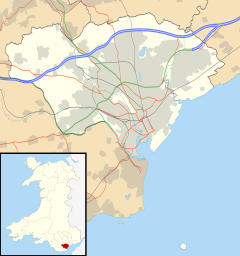| County Hall, Cardiff | |
|---|---|
 County Hall main entrance (2010) | |
| General information | |
| Address | Bute East Dock, Atlantic Wharf, Butetown, Cardiff |
| Country | United Kingdom |
| Coordinates | 51°28′10″N3°09′48″W / 51.46956°N 3.16326°W |
| Completed | 1987 |
| Design and construction | |
| Architect(s) | J. R. C. Bethell |
The County Hall (Welsh : Neuadd y Sir) is a municipal building located beside the disused Bute East Dock in the Atlantic Wharf area of Butetown, Cardiff. Formerly the home of South Glamorgan County Council, it is now the headquarters of Cardiff Council.

